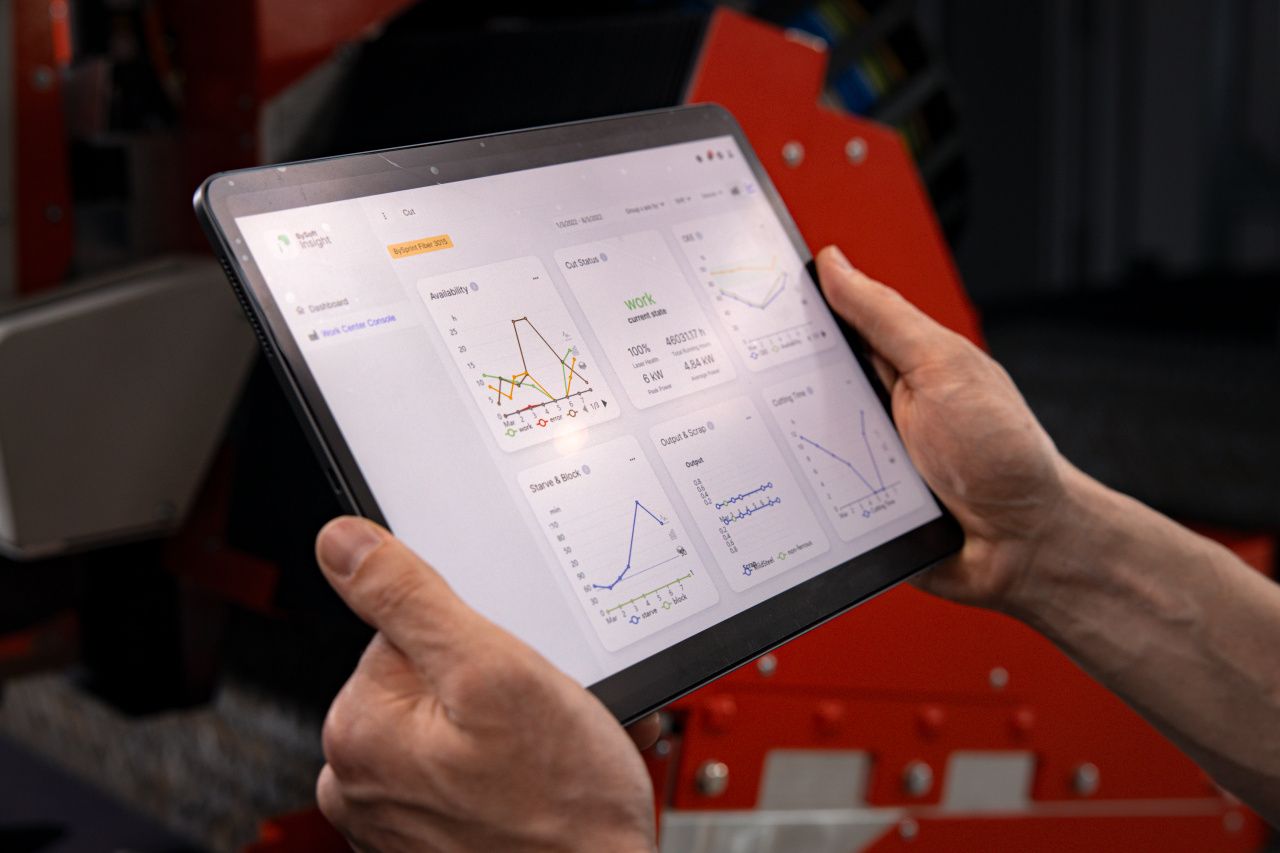
Blog Unlock the Full Potential in Your Fabricating Value Chain
While some areas for improvement may seem obvious, many remain invisible without an in-depth analytical look at each stage in the value chain. Improvements need to be based on data and objective reasoning rather than assumptions.
To ensure progress, it’s essential to balance optimizing current operations with envisioning what could be achieved by leveraging new technologies.
Without this forward-thinking vision, businesses are often confined to incremental improvements in their current processes, reaching a ceiling of efficiency that prevents them from achieving their full potential. Companies that fail to look beyond the status quo risk stagnating, while competitors with an eye on future technologies and innovations will thrive.
The Importance of “Mini Transactions”: Winning orders before production begins
What is the turnaround time for your quoting process? In many cases, orders are won or lost at this stage. The speed and accuracy of your quoting process are critical, not just for securing the job but for setting the tone of the entire transaction.
Potential customers judge a company by the way it handles these “mini transactions”— small but crucial interactions such as quote requests, clarifications, and updates—are indicators of how that company will manage the larger, more complex task of fulfilling an order. Is your company quick, responsive, and flexible?
Streamlining these pre-order interactions can be just as important as having competitive pricing. Customers increasingly favor companies that are transparent throughout the process and easy to work with. Efficient “mini transactions” signal that your company values its client’s time and resources.
How to optimize the quoting process
- Use automated quoting systems: Modern software can generate instant quotes from customer-provided specifications, and reduce human error and the response time back to the potential customer.
- Engage in transparent communication: Ensure potential customers are regularly updated during the quoting process. Using automated response emails to acknowledge receipt of a request and provide a timeline for when the potential customer will receive a quote can go a long way in making your company more appealing. Automated response emails can be set up within your company’s email program like MS Outlook for example.
- Real-time material cost integration: Integrate market data into your quoting process so you can provide accurate, up-to-date pricing that reflects current material costs.
Analyzing the front-end: Breaking down orders efficiently
Once the company secures an order, how fast can the front office production staff or ERP system break down that order into the required materials, processes, and workflows? Speed is essential, but so is accuracy.
Companies with highly automated front-end systems are better positioned to handle orders quickly and efficiently. Today’s ERP (Enterprise Resource Planning) systems are capable of processing orders into detailed steps that include everything from material requirements to machine scheduling. The process no longer needs to rely on manual input from engineers or production managers, which can slow down operations, particularly during busy periods.
Key areas for front-end improvement
- Automated programming systems: Software can take the potential customer’s provided 2D or 3D files and automatically generate CNC machine programs. These programs can then nest parts efficiently into existing orders, optimizing material use.
- ERP Integration: Your ERP system should be able to seamlessly integrate with your CAD/CAM software, ensuring a smooth transition from order receipt to production.
- MES Integration: Utilizing a Manufacturing Execution System (MES) like Bystronic’s BySoft Shop Floor software, provides the ability to plan, monitor, and track all the active jobs and machine workloads. This enables managers to react on short notice to ever-changing production requirements.
- After-hours automation: Orders that come in after hours shouldn’t sit idle until staff return. Automated systems can continue processing these orders, reducing delays, increasing overall throughput and creating a distinctive competitive advantage for faster turnarounds.
Laser Cutting: The core of metal fabrication
At the heart of the metal fabricating process is laser cutting. But even here, there’s potential for improvement and increased efficiency. How automated is your laser cutting operation? Are materials loaded manually, or does the system automatically pull from a material storage system? Does the machine require manual setup for each job, or is setup largely automated?
- Automation of material handling and laser setup is key. The more steps that can be handled automatically, the less downtime there will be between jobs, and the more efficient your process becomes.
- Upgrading your laser technology can also have a significant impact. Fiber lasers, for example, are now capable of producing up to 30kW of power, making them 4 to 6 times more efficient than older CO2 laser technology. Upgrading to fiber lasers can increase production speed while lowering energy costs.
- Tracking performance metrics from your lasers is essential for continuous improvement. Data on laser idle time, material yield, and job completion time can highlight areas of inefficiency and inform decisions on equipment upgrades or process changes.
Continuous improvement: More than just optimization
While optimization is critical for success, continuous improvement is more than just tweaking current processes. It’s about having an open mind to new technologies and strategies that can radically reshape your operations.
Innovation should be a mindset ingrained in the culture of your company. By continually asking how things could be better, you position yourself to lead the industry rather than just follow it.
By embracing continuous improvement and innovation, your company can move beyond the status quo and unlock the full potential in your fabricating value chain. Every part of your fabricating value chain has room for optimization, but only those willing to look ahead to new technologies and innovations will truly thrive.